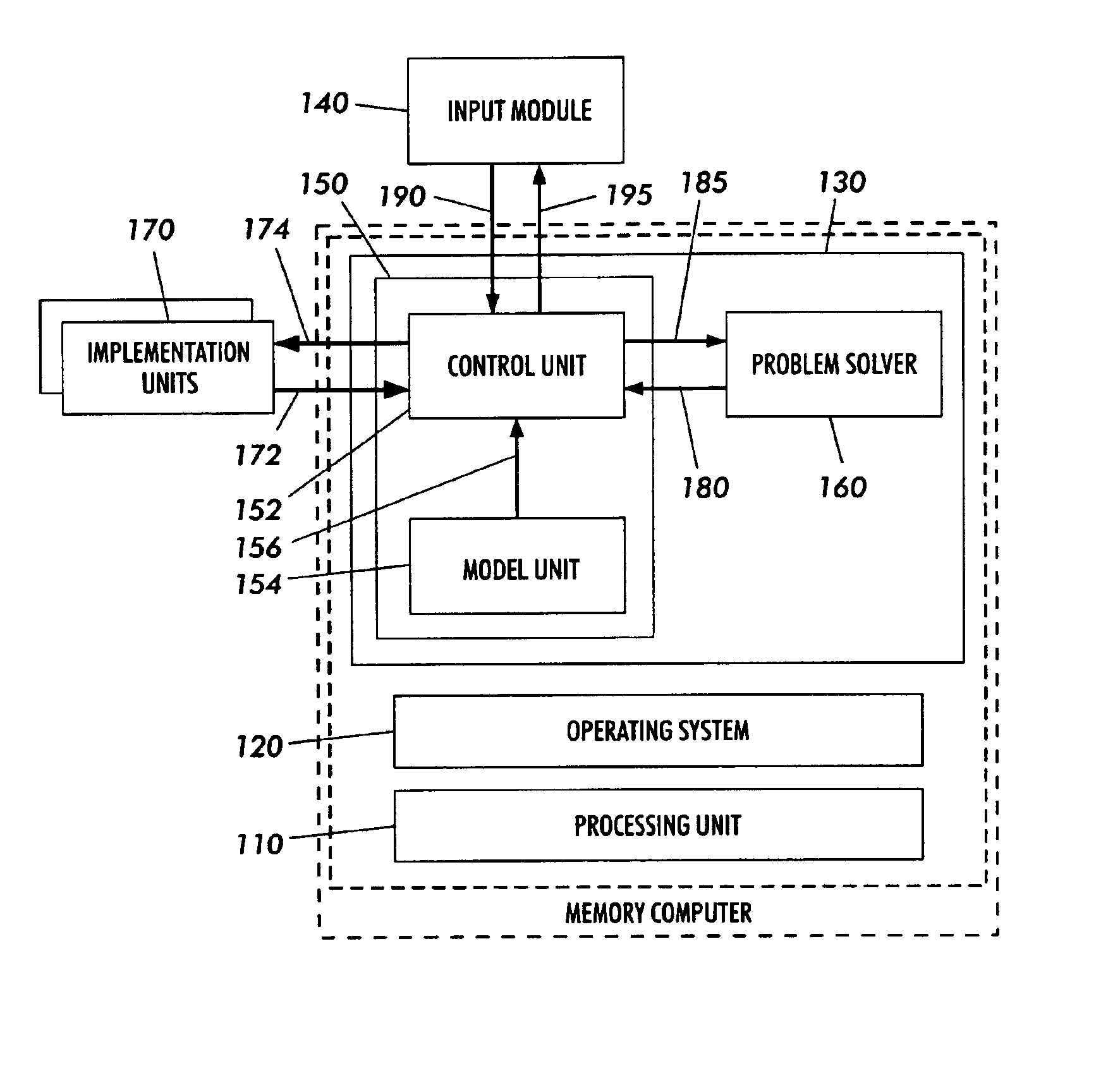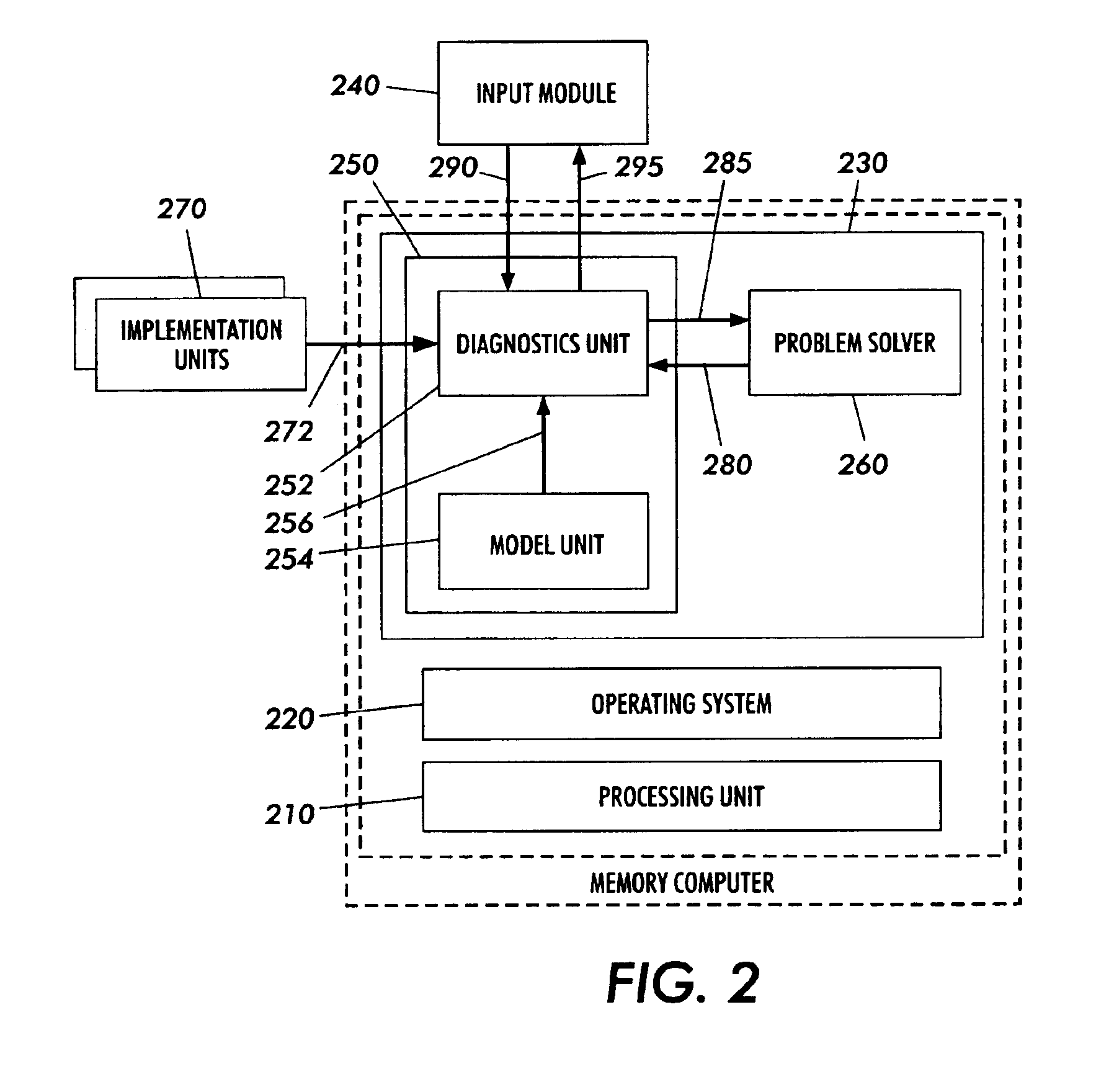Method and system for algorithm synthesis in problem solving
a problem solving and algorithm synthesis technology, applied in the field of computerized problem solving, can solve the problems of military hardware often outlasting the usefulness of its technology, the decision system for such applications has not kept pace with hardware development, and the embedded processors usually have strong resource limitations
- Summary
- Abstract
- Description
- Claims
- Application Information
AI Technical Summary
Benefits of technology
Problems solved by technology
Method used
Image
Examples
Embodiment Construction
[0031]A few research groups have developed adaptive constraint solving approaches. These can be divided into off-line methods that learn the best configuration for a given set of problems and on-line methods for switching between search algorithms in response to poor solver performance. In the off-line learning approach, the learning program is given a solver algorithm, a set of heuristics, a set of problems, and a performance objective function, and it generates a solver configuration (algorithm and heuristics) that performs optimally on the problem set according to the objective. A typical version of on-line adaptation is the algorithm portfolio approach. In one example, the solver has a set of algorithms available that it tries in a fixed order based on performance criteria such as thrashing, as described in J. Borrett, E. P. K. Tsang, and N. R. Walsh, “Adaptive Constraint Satisfaction: The Quickest First Principle,”Proc. ECAI'96, Budapest, Hungary, 1996, pp. 160-164. In another ...
PUM
 Login to View More
Login to View More Abstract
Description
Claims
Application Information
 Login to View More
Login to View More - R&D
- Intellectual Property
- Life Sciences
- Materials
- Tech Scout
- Unparalleled Data Quality
- Higher Quality Content
- 60% Fewer Hallucinations
Browse by: Latest US Patents, China's latest patents, Technical Efficacy Thesaurus, Application Domain, Technology Topic, Popular Technical Reports.
© 2025 PatSnap. All rights reserved.Legal|Privacy policy|Modern Slavery Act Transparency Statement|Sitemap|About US| Contact US: help@patsnap.com



